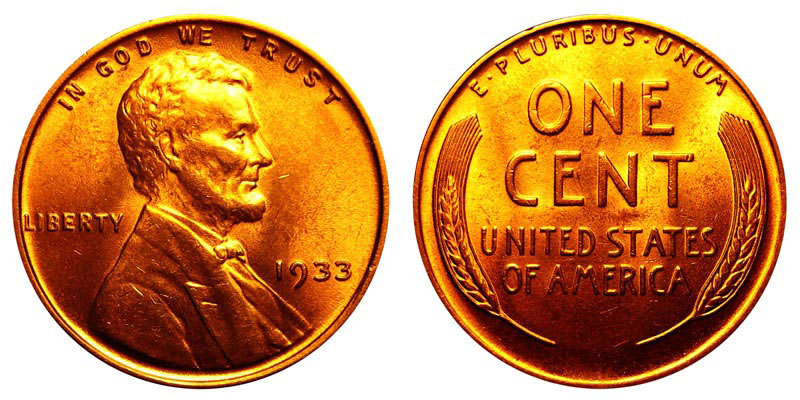Cents: Coin Library
This is the Small Cents section of our comprehensive Coin Library. You will find more information about each cent coin design below.
Originally, the United States made a large version of copper one-cent coins. This was abandoned in the middle of the 19th century. The smaller size cents that we are familiar with today proved more useful and popular with the public.
Flying Eagle Cent (1856–1858)

Image via USA CoinBook
The Flying Eagle cent was the first "small cent." More than 1,000 pattern pieces were struck in 1856. Many of these entered circulation. This has led most collectors to consider the 1856 Flying Eagle cent the first year of circulation. Mass production of the Flying Eagle cent began in 1857 but ended only one year later, in 1858.
The short run of the Flying Eagle cent was blamed on the difficulty in getting a full strike. The new small cent used an alloy of 88% copper and 12% nickel, instead of the pure copper used on the large cents that preceded it. The change to a nickel alloy was pushed through Congress by rich industrialist Joseph Wharton, who had a monopoly over the U.S. nickel market.
Indian Head Cent (1859–1909)

Image via USA CoinBook
The Indian Head cent design ran for fifty years, from 1859 to 1909. It was replaced later than year by the Lincoln cent. The Indian head cent used an 88%/12% copper-nickel alloy from 1859 to 1864. This was the same hard alloy used by the Flying Eagle cent, and it caused the same problems in getting a complete strike on the coins.
This composition was changed to bronze in 1864. This 95% copper alloy would be the standard for small cents for nearly 100 years. The softer metal allowed the Mint to easily strike pennies with full details.
Lincoln Cent (1909–present)

Image via USA CoinBook
The Lincoln cent debuted in 1909 to mark the 100th anniversary of the birth of Abraham Lincoln. It is the longest-running coin design in U.S. history. Technically, only the obverse, showing Lincoln's profile, has remained unchanged. There have been three distinct reverses on the Lincoln cent.
The original "Wheat Back" design ran from 1909 to 1958. To mark the 150th anniversary of Lincoln's birth, the reverse was changed to feature the Lincoln Memorial.
After a special Lincoln Bicentennial celebration in 2009 that featured cents with four different reverses, the Lincoln cent received its third permanent reverse. This reverse, introduced in 2010, features a vintage Union Shield design that was popular in early American art through the beginning of the 20th century.
More Resources About Cents
The cent is still the most widely collected American coin. It is a coin denomination that has its fair share of collectible error varieties. The penny also stands out as the only U.S. coin with a copper color. (Of course, today's pennies are only 2.5% copper, as they are now made of 97.5% zinc. Some collectors affectionately call these "Zincolns.")
Another distinction held by the penny is it was the first coin in the United States to feature the likeness of a real historical figure, Abraham Lincoln, beginning in 1909. This was done in honor of the 100th anniversary of Lincoln's birth in 1809.
Follow the links below for more information about U.S. pennies:
2009 Lincoln Penny Value: Bicentennial Cents
